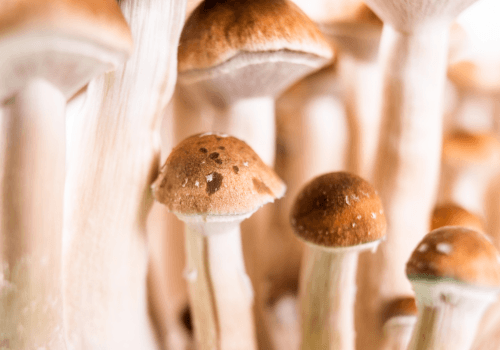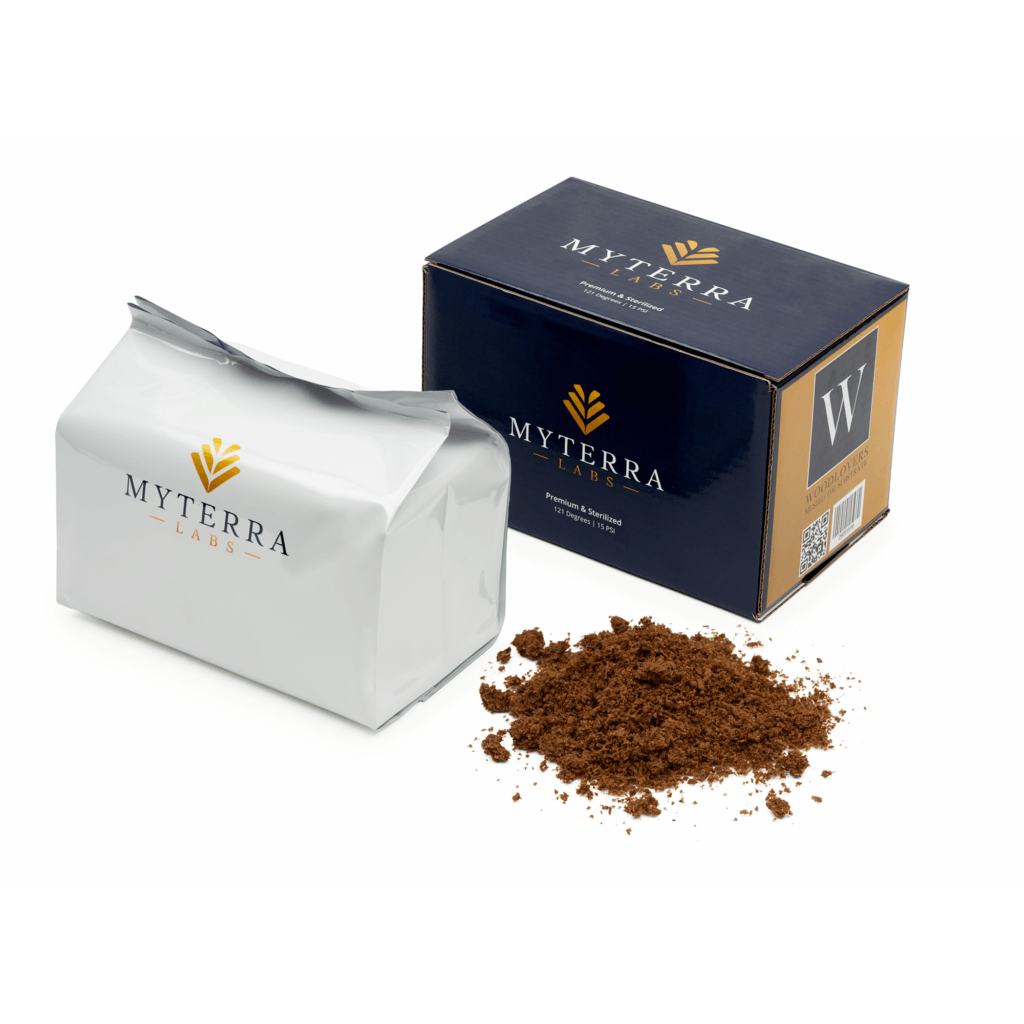
Understanding Mycelium and Its Role in Mushroom Cultivation
Welcome to the fascinating realm of mushroom cultivation, where a mysterious and intricate network called mycelium takes center stage. If you’re new to the world of growing mushrooms, you might be wondering, “What is mycelium?” Let’s embark on a journey of discovery and unravel the secrets of this remarkable fungal structure.
What is Mycelium?
In simple terms, mycelium is the vegetative part of a fungus, and it plays a pivotal role in the life cycle of mushrooms. Picture it as the intricate root system of the mushroom, but instead of being buried in the soil, it weaves through the substrate, creating a vast and complex network.

The Hidden Kingdom Beneath the Surface
Mycelium is often referred to as the “hidden kingdom” because it operates beneath the surface, unseen to the naked eye. Comprising tiny, thread-like structures called hyphae, mycelium spreads and colonizes its environment, breaking down organic matter in its path.
Key Functions of Mycelium:
1. Nutrient Absorption:
- Mycelium acts as a digestive system for the fungus. It secretes enzymes into its surroundings, breaking down complex organic compounds into simpler forms.
- These enzymes then facilitate the absorption of nutrients, providing the fungus with essential elements for growth.
2. Network of Communication:
- Mycelium serves as a communication highway for the fungal community. Through chemical signaling, different mycelial strands can exchange information and nutrients.
- This interconnected network allows fungi to collaborate, share resources, and even warn each other of potential threats.
3. Colonization and Expansion:
- When you’re cultivating mushrooms, mycelium is the powerhouse behind substrate colonization. It spreads through the growing medium, transforming it into a mycelial mat.
- As the mycelium expands, it prepares the substrate for the next phase of the mushroom life cycle – the formation of fruiting bodies.
Mycelium in Mushroom Cultivation: A Vital Player
When you embark on the journey of growing your own mushrooms, mycelium becomes a crucial player in the process. Here’s how it contributes to successful cultivation:
1. Inoculation:
- To start the cultivation process, mycelium is introduced to a substrate. This can be done using spores, liquid culture, or pre-colonized grain spawn.
- The mycelium then begins its mission of colonizing the substrate, breaking it down and preparing it for the next stages.

2. Substrate Colonization:
- During this phase, mycelium spreads rapidly through the substrate, creating a white, web-like pattern. This is a sign that the mycelium is establishing itself and preparing for the next step – fruiting.
3. Fruiting Stage:
- The mycelium signals that it’s ready to produce mushrooms by initiating the formation of pinheads, which eventually develop into fully grown mushrooms.
How to Harness the Power of Mycelium with Our Grow Kits:
Excited to witness the magic of mycelium in action? Our user-friendly grow kits are designed to simplify the mushroom cultivation process, making it accessible for beginners.
-
Select Your Kit:
- Explore our range of grow kits, each equipped with carefully sterilized grains and substrates to kickstart your mycelium adventure.
-
Inoculate and Observe:
- Choose your preferred method of inoculation – spores, liquid culture, or grain spawn. Follow our easy-to-understand instructions and watch as the mycelium weaves its intricate web.
-
Harvest Your Own Mushrooms:
- As the mycelium completes its mission, it’s time to witness the fruits of your labor. Harvest your own homegrown mushrooms and savor the satisfaction of a successful cultivation journey.
Ready to dive into the mesmerizing world of mycelium? Try an Easy Mushroom Grow Kit to witness the power of mycelium in your home. Happy growing!
You might also enjoy
SHIITAKE: Grow Kit Instructions
Substrate Compatibility Guide
PS1: Grow Kit Instructions
Featured products
Welcome to the fascinating realm of mushroom cultivation, where a mysterious and intricate network called mycelium takes center stage. If you’re new to the world of growing mushrooms, you might be wondering, “What is mycelium?” Let’s embark on a journey of discovery and unravel the secrets of this remarkable fungal structure.
What is Mycelium?
In simple terms, mycelium is the vegetative part of a fungus, and it plays a pivotal role in the life cycle of mushrooms. Picture it as the intricate root system of the mushroom, but instead of being buried in the soil, it weaves through the substrate, creating a vast and complex network.

The Hidden Kingdom Beneath the Surface
Mycelium is often referred to as the “hidden kingdom” because it operates beneath the surface, unseen to the naked eye. Comprising tiny, thread-like structures called hyphae, mycelium spreads and colonizes its environment, breaking down organic matter in its path.
Key Functions of Mycelium:
1. Nutrient Absorption:
- Mycelium acts as a digestive system for the fungus. It secretes enzymes into its surroundings, breaking down complex organic compounds into simpler forms.
- These enzymes then facilitate the absorption of nutrients, providing the fungus with essential elements for growth.
2. Network of Communication:
- Mycelium serves as a communication highway for the fungal community. Through chemical signaling, different mycelial strands can exchange information and nutrients.
- This interconnected network allows fungi to collaborate, share resources, and even warn each other of potential threats.
3. Colonization and Expansion:
- When you’re cultivating mushrooms, mycelium is the powerhouse behind substrate colonization. It spreads through the growing medium, transforming it into a mycelial mat.
- As the mycelium expands, it prepares the substrate for the next phase of the mushroom life cycle – the formation of fruiting bodies.
Mycelium in Mushroom Cultivation: A Vital Player
When you embark on the journey of growing your own mushrooms, mycelium becomes a crucial player in the process. Here’s how it contributes to successful cultivation:
1. Inoculation:
- To start the cultivation process, mycelium is introduced to a substrate. This can be done using spores, liquid culture, or pre-colonized grain spawn.
- The mycelium then begins its mission of colonizing the substrate, breaking it down and preparing it for the next stages.
2. Substrate Colonization:
- During this phase, mycelium spreads rapidly through the substrate, creating a white, web-like pattern. This is a sign that the mycelium is establishing itself and preparing for the next step – fruiting.
3. Fruiting Stage:
- The mycelium signals that it’s ready to produce mushrooms by initiating the formation of pinheads, which eventually develop into fully grown mushrooms.
How to Harness the Power of Mycelium with Our Grow Kits:
Excited to witness the magic of mycelium in action? Our user-friendly grow kits are designed to simplify the mushroom cultivation process, making it accessible for beginners.
-
Select Your Kit:
- Explore our range of grow kits, each equipped with carefully sterilized grains and substrates to kickstart your mycelium adventure.
-
Inoculate and Observe:
- Choose your preferred method of inoculation – spores, liquid culture, or grain spawn. Follow our easy-to-understand instructions and watch as the mycelium weaves its intricate web.
-
Harvest Your Own Mushrooms:
- As the mycelium completes its mission, it’s time to witness the fruits of your labor. Harvest your own homegrown mushrooms and savor the satisfaction of a successful cultivation journey.
Ready to dive into the mesmerizing world of mycelium? Try an Easy Mushroom Grow Kit to witness the power of mycelium in your home. Happy growing!
You might also enjoy

SHIITAKE: Grow Kit Instructions
Learn how to grow Shiitake mushrooms using the Myterra Labs

Substrate Compatibility Guide
Selecting the right substrate is a key element in successful

PS1: Grow Kit Instructions
Welcome to the enchanting realm of our All-in-one Grow Kit,














